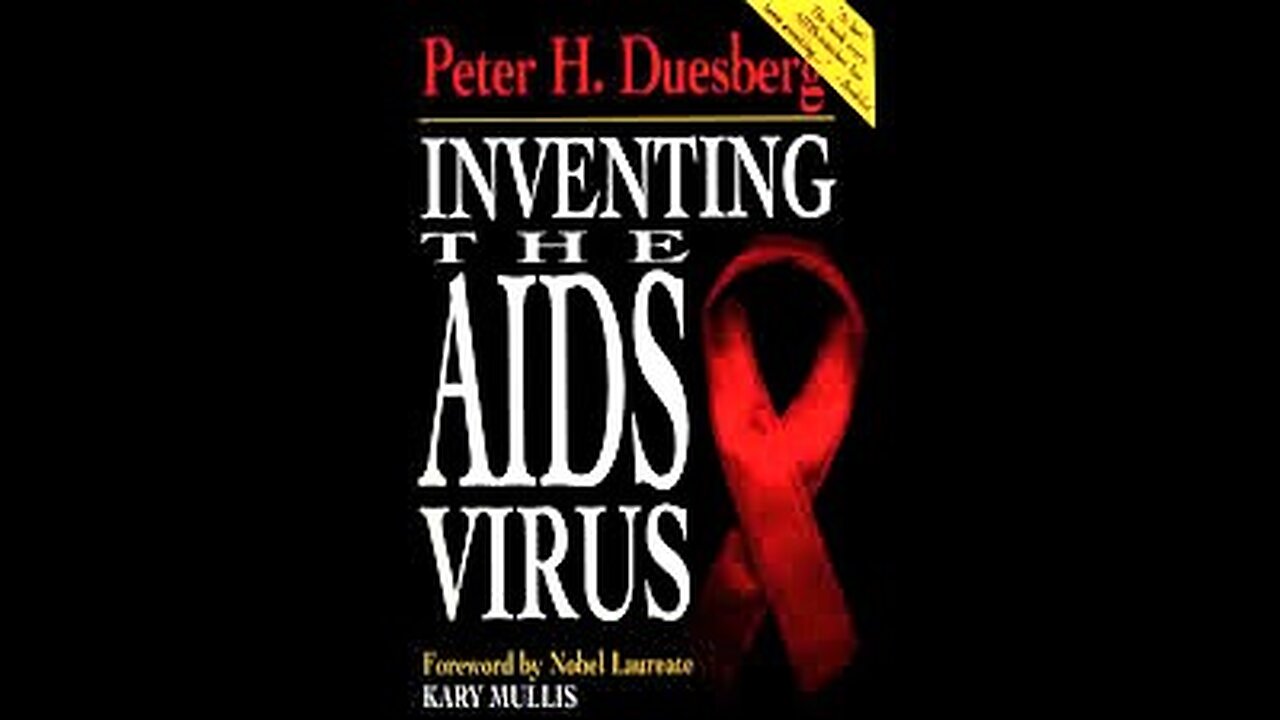Premium Only Content

BAYER: The SHOCKING Scandal That Gave People HIV
Bayer, a major pharmaceutical company, sold an infected blood product called Koate which was contaminated with HIV and Hepatitis
This infected product was distributed to countries worldwide, spreading two deadly diseases to unsuspecting patients.
Bayer supplied Koate to multiple countries, including Canada, Italy, Japan, the UK and the United States. The product was made form human plasma, which had not been appropriately screened or heat-treated for infectious diseases like Hepatitis B, Hepatitis C and HIV
Because of this, thousands of people were infected by these catastrophic illnesses when they received infusions of this tainted blood product.
At the time, Bayer had marketed Koate as an effective solution for treating hemophilia; however, it failed to adequately disclose its potential risks or warn customers about its contamination levels.
Despite the dangers being well known to the manufacturer and health authorities, Bayer continued distributing Koate without proper safety protocols through the mid-1980s.
The consequences of this preventable disaster are still felt today as many who were infected with HIV or Hepatitis through contaminated Koate have since passed away due to related illnesses or complications.
Additionally, those lucky enough to survive continue facing challenges associated with chronic diseases and healthcare costs.
Bayer’s failure and negligence impacted countless lives worldwide and serves as a reminder of the need for stringent safety standards when dealing with potentially hazardous substances like blood products.
Companies should always value human life over profit margins; otherwise, such scenarios can become a global health crisis, as seen with Koate in the 1970s and 1980s.
Inventing the AIDS Virus by Peter H. Duesberg
Kary Mullis, Nobel Prize winner in Chemistry
The following was written by Kary Mullis for the introduction to the book "Inventing the AIDS Virus" by Peter H. Duesberg (Regnery Publishing, INC; Washington DC, 1996):
In 1988 I was working as a consultant at Specialty Labs in Santa Monica, CA, setting up analytic routines for the Human Immunodeficiency Virus (HIV). I knew a lot about setting up analytic routines for anything with nucleic acids in it because I invented the Polymerase Chain Reaction. That's why they hired me.
Acquired Immune Deficiency Syndrome (AIDS), on the other hand, was something I did not know a lot about. Thus, when I found myself writing a report on our progress and goals for the project, sponsored by the National Institutes of Health, I recognized that I did not know the scientific reference to support a statement I had just written: "HIV is the probable cause of AIDS."
So I turned to the virologist at the next desk, a reliable and competent fellow, and asked him for the reference. He said I didn't need one. I disagreed. While it's true that certain scientific discoveries or techniques are so well established that their sources are no longer referenced in the contemporary literature, that didn't seem to be the case with the HIV/AIDS connection. It was totally remarkable to me that the individual who had discovered the cause of a deadly and as-yet-uncured disease would not be continually referenced in the scientific papers until that disease was cured and forgotten. But as I would soon learn, the name of that individual - who would surely be Nobel material - was on the tip of no one's tongue.
Of course, this simple reference had to be out there somewhere. Otherwise, tens of thousands of public servants and esteemed scientists of many callings, trying to solve the tragic deaths of a large number of homosexual and/or intravenous (IV) drug-using men between the ages of twenty-five and forty, would not have allowed their research to settle into one narrow channel of investigation. Everyone wouldn't fish in the same pond unless it was well established that all the other ponds were empty. There had to be a published paper, or perhaps several of them, which taken together indicated that HIV was the probable cause of AIDS. There just had to be.
I did computer searches, but came up with nothing. Of course, you can miss something important in computer searches by not putting in just the right key words. To be certain about a scientific issue, it's best to ask other scientists directly. That's one thing that scientific conferences in faraway places with nice beaches are for.
I was going to a lot of meetings and conferences as part of my job. I got in the habit of approaching anyone who gave a talk about AIDS and asking him or her what reference I should quote for that increasingly problematic statement, "HIV is the probable cause of AIDS."
After ten or fifteen meetings over a couple years, I was getting pretty upset when no one could cite the reference. I didn't like the ugly conclusion that was forming in my mind: The entire campaign against a disease increasingly regarded as a twentieth century Black Plague was based on a hypothesis whose origins no one could recall. That defied both scientific and common sense.
Finally, I had an opportunity to question one of the giants in HIV and AIDS research, DL Luc Montagnier of the Pasteur Institute, when he gave a talk in San Diego. It would be the last time I would be able to ask my little question without showing anger, and I figured Montagnier would know the answer. So I asked him.
With a look of condescending puzzlement, Montagnier said, "Why don't you quote the report from the Centers for Disease Control? "
I replied, "It doesn't really address the issue of whether or not HIV is the probable cause of AIDS, does it?"
"No," he admitted, no doubt wondering when I would just go away. He looked for support to the little circle of people around him, but they were all awaiting a more definitive response, like I was.
"Why don't you quote the work on SIV [Simian Immunodeficiency Virus]?" the good doctor offered.
"I read that too, DL Montagnier," I responded. "What happened to those monkeys didn't remind me of AIDS. Besides, that paper was just published only a couple of months ago. I'm looking for the original paper where somebody showed that HIV caused AIDS.
This time, DL Montagnier's response was to walk quickly away to greet an acquaintance across the room.
Cut to the scene inside my car just a few years ago. I was driving from Mendocino to San Diego. Like everyone else by now, I knew a lot more about AIDS than I wanted to. But I still didn't know who had determined that it was caused by HIV. Getting sleepy as I came over the San Bernardino Mountains, I switched on the radio and tuned in a guy who was talking about AIDS. His name was Peter Duesberg, and he was a prominent virologist at Berkeley. I'd heard of him, but had never read his papers or heard him speak. But I listened, now wide awake, while he explained exactly why I was having so much trouble finding the references that linked HIV to AIDS. There weren't any. No one had ever proved that HIV causes AIDS. When I got home, I invited Duesberg down to San Diego to present his ideas to a meeting of the American Association for Chemistry. Mostly skeptical at first, the audience stayed for the lecture, and then an hour of questions, and then stayed talking to each other until requested to clear the room. Everyone left with more questions than they had brought.
I like and respect Peter Duesberg. I don't think he knows necessarily what causes AIDS; we have disagreements about that. But we're both certain about what doesn't cause AIDS.
We have not been able to discover any good reasons why most of the people on earth believe that AIDS is a disease caused by a virus called HIV. There is simply no scientific evidence demonstrating that this is true.
We have also not been able to discover why doctors prescribe a toxic drug called AZT (Zidovudine) to people who have no other complaint other than the fact that they have the presence of antibodies to HIV in their blood. In fact, we cannot understand why humans would take this drug for any reason.
We cannot understand how all this madness came about, and having both lived in Berkeley, we've seen some strange things indeed. We know that to err is human, but the HIV/AIDS hypothesis is one hell of a mistake.
Inventing The AIDS Virus by peter Duesberg is one of the most critical examinations of not only the hiv model of AIDS but of the current scientific community's approach to diseases, in this book Peter H Duesdberg give a comprehensive summary and explanation of the germ theory of disease as well as nutritional deficiency's role in disease models, he later goes on to stress that the correlative relationship of hiv and aids is not a causative one as many factors (recreational drug use as well as the infamous AZT) are not ruled out of the current hiv/aids model, this book is a very hard pill to swallow but a necessary criticism of established disease models, I was especially won over by the prion chapter
https://www.audible.com/pd/Inventing-the-AIDS-Virus-Audiobook/B00DBBJW0E
An eminent scientist and pioneer in the discovery of retroviruses challenges the widely accepted belief that HIV is the cause of AIDS. Duesberg argues that HIV is merely a harmless passenger virus that does not cause AIDS. Sure to spark intense debate, this provocative book offers an original and incisive critique of the rise and fall of HIV.
©1996 Peter Duesberg and Bryan J. Ellison (P)2013 Audible, Inc.
-
 24:24
24:24
GritsGG
16 hours agoSpectating Random Solos with the Rank 1 Player - Pro Strategies!
17.8K -
 LIVE
LIVE
Lofi Girl
2 years agoSynthwave Radio 🌌 - beats to chill/game to
529 watching -
 9:27
9:27
MattMorseTV
2 days ago $17.85 earnedHe just lost EVERYTHING.
87.8K122 -
 7:10:39
7:10:39
MyronGainesX
1 day agoFormer Fed Explains Serial Killer Israel Keyes, Yahweh ben Yaweh, And The El Rukn Gang, And Police Shooting Reactions!
149K37 -
 4:22:33
4:22:33
Due Dissidence
17 hours agoGaza STARVATION Hits Tipping Point, Flotilla CAPTURED, Bongino BREAKS SILENCE, Maxwell MEETS DOJ,
63.9K140 -
 10:52:37
10:52:37
GritsGG
18 hours agoWin Streaking! Most Wins 3180+! 🔥
106K2 -
 3:01:03
3:01:03
This is the Ray Gaming
10 hours agoSunday Night LIVE | Rumble Premium Streamer
35.5K -
 2:42:31
2:42:31
Barry Cunningham
15 hours agoPRESIDENT TRUMP IS SAVING AMERICA ONE DEAL AT A TIME! UNBELIEVABLE!
99.2K57 -
 5:12:47
5:12:47
EricJohnPizzaArtist
5 days agoAwesome Sauce PIZZA ART LIVE Ep. #56: Bret “The Hitman” Hart Tribute with SoundBoardLord!
54.7K9 -
 1:38:08
1:38:08
HELMETFIRE
11 hours ago🟢GAMING WITH FIRE EP4🟢RUMBLE TAKEOVER!🟢
38.1K